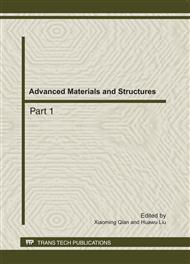p.985
p.989
p.994
p.1000
p.1004
p.1009
p.1014
p.1021
p.1025
Magnitude of Intrinsic Electrocaloric Effect in PbTiO3 at High Electric Fields
Abstract:
Based on Landau-Devonshire theory, the electrothermal properties of PbTiO3 bulk and film are computed near the temperatures of their phase transitions. A first-order ferroelectric to paraelectric phase transition is present in PbTiO3 bulk. The coercive electric field at 700 K is about 25 MV m-1. High applied electric fields drive the transition to higher temperatures and the P−T curves to be continuous. For PbTiO3 film, the second-order phase transition reduces the excess entropy, and thereby the isothermal entropy change. With increasing electric field, the excess specific heat capacity becomes small, despite higher transition temperatures. The change of in-plane tensile misfit stress lowers the transition temperature. Besides, the adiabatic temperature change and the refrigerant capacity of PbTiO3 bulk are 4.76 K and 94.1 kJ m-3, respectively.
Info:
Periodical:
Pages:
1004-1008
Citation:
Online since:
September 2011
Authors:
Price:
Сopyright:
© 2011 Trans Tech Publications Ltd. All Rights Reserved
Share:
Citation:


